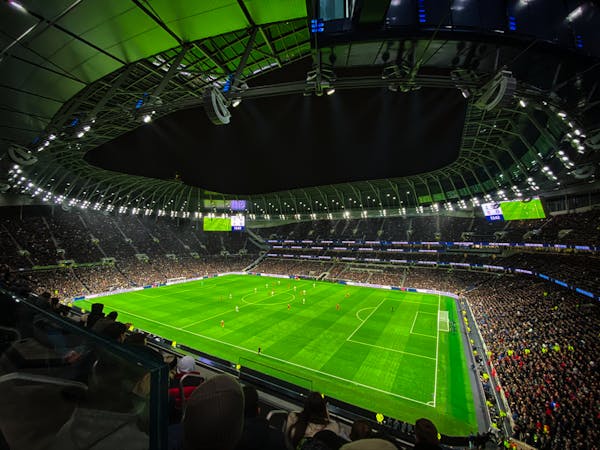For football fans around the world, the UEFA Champions League is sacred.
It’s more than just a tournament.
It’s drama.
It’s magic.
It’s memories — nights when the whole world seems to stop, just to watch a ball curve into the top corner or a last-second goal that sends a stadium into madness.
For years, the Champions League has been the crown jewel of European football.
But change is coming.
And it’s coming fast.
In 2025, the UEFA Champions League will once again change its format — and fans, clubs, players, and pundits are trying to figure out exactly what this means for the future of their favorite competition.
Here’s everything we know so far.
A Little History: Why Change at All?
Before we dive into the new changes, it’s important to understand something:
This isn’t the first time UEFA has changed the Champions League format.
The tournament has evolved many times over the decades:
- It started in 1955 as the “European Champion Clubs’ Cup.”
- Only national champions could compete.
- It was straight knockouts — no group stages, no second chances.
In 1992, it was rebranded as the UEFA Champions League.
Group stages were introduced.
More teams were allowed in.
Money started flowing in — big money.
And slowly, year after year, the Champions League became bigger, richer, and more glamorous.
But with success came pressure.
More clubs wanted a piece of the pie.
Big clubs wanted even more power and money.
Smaller clubs felt squeezed out.
UEFA, caught in the middle, needed to keep the peace.
So once again, they’re changing the format.
And it’s going to be very different.
The Current Format: What We’re Used To
Before 2025, the Champions League looked like this:
- 32 teams in the group stage.
- Divided into eight groups of four teams each.
- Each team played the others in their group home and away — six games total.
- The top two teams from each group advanced to the knockout rounds.
- From there, it was simple: home and away knockouts until the one-game final.
It worked.
It created epic matches, surprise eliminations, and endless drama.
So why change?
The short answer: money and politics.
The long answer: the big clubs — like Real Madrid, Manchester City, Bayern Munich — want more big games between big teams earlier in the tournament.
They want fewer “meaningless” group stage games against tiny clubs.
UEFA needs to satisfy them — or risk seeing another “Super League” rebellion.
Thus, the new format.
The New Format: What’s Coming in 2025
Starting with the 2025-26 season, the Champions League will adopt a new “Swiss model”.
Here’s what it means:
1. More Teams
- Instead of 32 teams, there will now be 36 teams in the main tournament.
- More slots = more money and more markets watching.
2. One Big League Table
- No more traditional “groups.”
- All 36 teams will be thrown into one giant league.
- But don’t worry — not everyone will play everyone.
3. 8 Matches Per Team
- Each team will play eight matches in the “league stage.”
- They will play against eight different teams — some at home, some away.
- Matches are based on a “seeding pot” system, to make sure teams play opponents of different strength levels.
So, instead of being stuck in a small group, teams get a wider range of opponents.
Big clubs get more blockbuster matches earlier — exactly what they wanted.
4. New Qualification Rules
- After the eight matches:
- The top 8 teams in the league table automatically qualify for the Round of 16.
- Teams ranked 9th to 24th will have to play a playoff round — two-legged matches to fight for the remaining Round of 16 spots.
- Teams ranked 25th or lower are eliminated — no parachuting into the Europa League anymore.
- The top 8 teams in the league table automatically qualify for the Round of 16.
This adds a new layer of tension — even finishing 20th could still mean a shot at glory!
Why UEFA Is Making These Changes
UEFA officials give a few official reasons:
- More exciting matches:
Big clubs face big clubs earlier. Less “dead rubber” games. - Fairer competition:
Teams face a wider range of opponents, not just stuck in a weak or strong group. - More money:
More games = more TV rights = more revenue.
But if we’re being honest, there’s another reason:
Keeping the big clubs happy.
In 2021, when a group of top clubs tried to launch the “European Super League,” it shook UEFA to its core.
They realized that if they didn’t give the giants more prestige and money, they might lose them altogether.
So these changes are, in many ways, a compromise to keep the Champions League alive — while avoiding another rebellion.
How Fans Are Reacting
Unsurprisingly, reactions are mixed.
Many fans are skeptical.
They worry:
- The magic of the group stages will be lost.
- The tournament will feel too big and confusing.
- Smaller clubs will have an even harder time making deep runs.
After all, part of the Champions League’s beauty is the David vs Goliath stories — like Ajax 2019, or Porto 2004.
If the big clubs dominate even more, will those fairytale runs disappear?
Other fans are excited.
More big games earlier?
Real Madrid vs Liverpool in October instead of a random team from Slovenia?
That sounds pretty good.
It really depends what kind of fan you are.
Traditionalists are nervous.
Casual fans might love it.
Impact on Small Clubs
For smaller clubs, the changes are a double-edged sword.
Good news:
- More spots means more chances to qualify.
- Playing against big clubs could mean bigger paydays.
Bad news:
- Fewer chances to go far.
- Harder to get easy matches early.
- Even more financial gap between the rich and the poor.
UEFA says it’s committed to keeping football open and accessible.
But many critics fear the new format will only make the strong stronger — and the weak weaker.
Scheduling Chaos
Another concern: the football calendar is already packed.
Players are exhausted.
Injuries are piling up.
National team matches, domestic leagues, domestic cups, friendlies, World Cup qualifiers — it never ends.
Adding more Champions League matches (and playoff rounds) will stretch squads even thinner.
Big clubs will manage — they have huge squads.
Smaller clubs could suffer badly.
UEFA says player welfare is a priority.
But actions speak louder than words.
And this new format feels like another burden on already tired players.
What About the Europa League and Conference League?
Interestingly, UEFA isn’t just changing the Champions League.
The Europa League and the Europa Conference League will also adopt the Swiss model.
Same principles:
- More teams.
- One league table.
- Playoff rounds for mid-ranked teams.
So the whole structure of European club football will feel very different by 2025.
Bigger.
Longer.
Richer.
But will it be better?
That’s the big question.
The Bottom Line: Change Is Coming
Love it or hate it, the UEFA Champions League is about to enter a new era.
Bigger tournaments.
More matches.
More pressure.
The goal?
To keep the Champions League at the center of world football — glitzier, richer, louder than ever.
But the soul of the tournament — the magic of an underdog beating a giant under the lights — that’s harder to protect.
If UEFA gets this wrong, they risk killing the very thing that made the Champions League so special.
If they get it right?
Well, we could be entering a new golden age of European football.
One thing’s for sure:
Football fans better buckle up.
Because the Champions League is about to look very, very different.
Quick Recap: What You Need to Know
- New format starts in 2025-26 season.
- 36 teams instead of 32.
- No more groups — one big league table.
- 8 matches for every team in the league stage.
- Top 8 qualify directly to Round of 16.
- 9th to 24th place fight in playoff rounds.
- More big matches earlier = more money.
- Europa League and Conference League also changing.
Final Thought
Football is all about moments.
The roar of the crowd.
The silence before a penalty.
The madness when the underdog wins.
The Champions League has given us those moments for decades.
Let’s hope, no matter how the format changes, it continues to deliver the magic that only football — and only the Champions League — can create.
Because at the end of the day, it’s not about TV rights or seedings or Swiss models.
It’s about the ball hitting the back of the net.
It’s about history being made.
It’s about dreams coming true — under the lights, on the biggest stage.
And that’s something no new format can ever take away.


